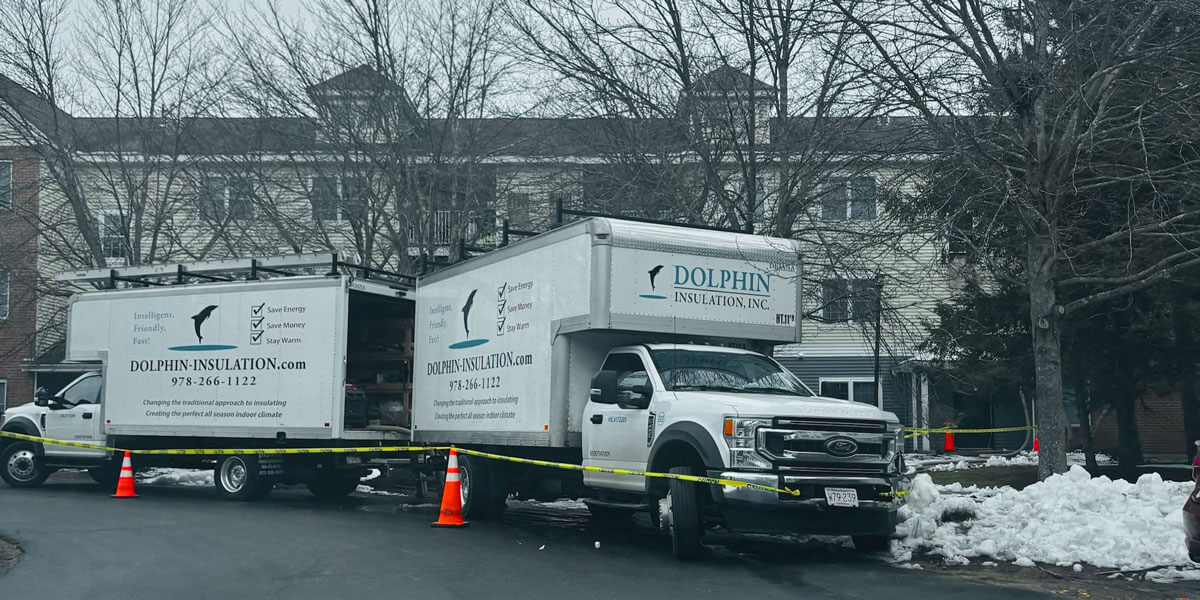In the search for insulation and an airtight home, you will encounter a lot of foreign terms. With all of the industry’s confusing expressions floating around in your head, how do you decipher the good from the bad, the efficient from the inefficient, and figure out exactly what you want for your home? As industry professionals, we can help you read the language of insulation so you can navigate the steps to seal your home’s envelope and save energy.
Let’s start with the basics. What exactly is insulation, and what does air sealing involve?
Insulation is a material installed in walls, ceilings, attics, and floors. This material keeps the heat where it is—whether it’s inside your home in the winter, or outside during the summer. Insulation stops heat from moving through the insulated barrier, which helps you regulate the temperature in your home. In the winter, insulation holds your heat inside and conserves your heating energy.
Air Sealing goes hand-in-hand with insulation. Air sealing is a process that seals off all of the unwanted airflow in your home. For example, warm air moves up from your basement, through your home, into your attic, and out through the roof when nothing has been sealed. Small leaks and cracks hide throughout your home, and although they may not be easy to spot, these holes certainly have an impact on your heating bill. Air sealing stops drafts from cooling down your home in the winter, and in the summer, sealing prevents heat from leaking into your home.
Blower Doors are machines that we use to pinpoint the exact locations of air leakage in your home. It is a very simple process that does not require extensive preparation or a large amount of space. We place the device in your doorway and it depressurizes your home, meaning that it pulls the air out. The increased airflow reveals the exact areas that require sealing.
Heat transfer, also referred to as heat transmission, is the process that insulation aims to prevent. It is the movement of heat through one material to another. Heat transfer occurs when one side of the barrier is colder and the other side is warmer. When left un-insulated, heat transfer takes away your ability to control your indoor temperature.
An R-value is a measurement of how resistant a material is to heat transfer. When a company tells you the R-value for a given material, compare it to some of your other options. Look for insulations with the higher R-values of the field, such as cellulose.
Loose-fill cellulose insulation—the kind that we use here at Dolphin—is the more energy-efficient insulating material. “Loose-fill” means that the insulation is blown, rather than rolled out in batts or sprayed. Blown insulation settles into the small cracks and tight corners in the areas being insulated, whereas other methods of installation fail to cover the whole area. Cellulose is primarily made out of recycled papers, treated with fire retardants. This insulation is green even in its production.
Your building shell is the system of your ceilings, floors, walls, and attic. It is essentially the frame of your house, and is where both insulation and air sealing occur. The ultimate objective for anyone looking to insulate and seal is to create the tightest building shell. Insulation protects your shell from heat transfer, and air-sealing stops unwanted air from passing through. When you strengthen your building shell, you protect your home from the outdoor weather and gain control over your indoor temperature, along with your heating and cooling bills.
Insulation terminology is not common knowledge, but knowing the basics will help you navigate your way to insulate your home. If you have any questions, contact Dolphin. As professionals, we speak this language every day and would love to help you understand the process of insulating and sealing your building shell.















